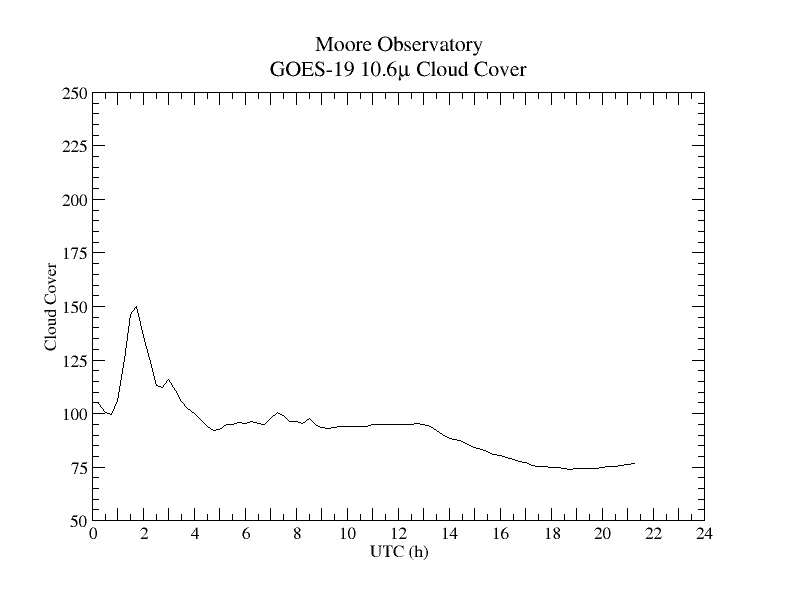
Local IR Sky Brightness 8-14 Microns


These data are digitized analog measurements from an Omega Engineering OS552-V1-2 infrared thermometer located at Moore Observatory. The device is a 12 mm diameter thermopile detector sensitive from 8 to 14 microns with a Fresnel lens and baffle that limits its field of view to approximately 6 degrees. Although this industrial grade sensor is suitable for extreme environments, its input aperture is open. In our application it is covered with a thin polyethylene window to prevent damage from insects and rain. The window does not significantly attenuate the IR signal.
The ambient temperature of the pyrometer and the infrared signal are measured simultaneously, and an effective source temperature is computed based on the assumption that the source is a blackbody radiator with an emissivity of 1.0. This detector is presently observing the sky approximately 45 degrees above our northeastern horizon. On clear days the sky temperature is below zero Celsius.
The Omega Engineering detector system produces an analog voltage proportional to the temperature it measures, and the voltage is then digitized with a 12-bit A/D converter and recorded. On the current graphs we convert the measured voltage to temperature so that the reading corresponds to the calibrated temperature shown on the detector electronics module.
These experimental data are being collected to develop a monitor for the infrared sky transparency and cloud cover at our site. The IR brightness measured here rises significantly when increased cloud cover reflects ground radiation downward. The local reference temperature sensor makes these data largely insensitive to diurnal ground temperature variations.